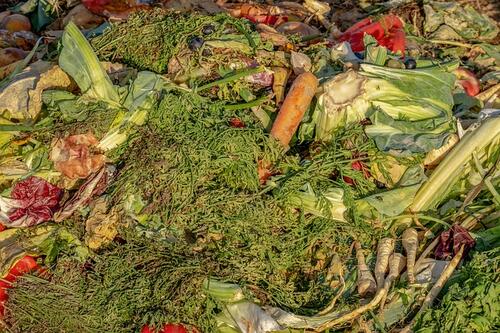
Table scraps can be used to reduce reliance on fossil fuels
Wasted food can be affordably turned into a clean substitute for fossil fuels

Wasted food can be affordably turned into a clean substitute for fossil fuels
By Media RelationsWasted food can be affordably turned into a clean substitute for fossil fuels.
New technology developed by researchers at the University of Waterloo engineers natural fermentation to produce a biodegradable chemical that can be refined as a source of energy.

The chemical could also be used to replace petroleum-based chemicals in a host of products including drugs and plastic packaging.
“People like me, environmental biotechnologists, look at food waste as a tremendous resource,” said Hyung-Sool Lee, a civil and environmental engineering professor at Waterloo. “With the right technologies, we can extract numerous useful chemicals and fuel from it.”
Wasted food in North America adds up to about 400 kilograms per person per year, with the worldwide economic loss estimated at $1.3 trillion every year. Most of that discarded food goes into landfills.
Technology already exists to reduce the environmental impact by diverting food waste, collecting methane gas as it is broken down by microorganisms and burning the gas to produce electricity.
But Lee said that system – known as anaerobic digestion – ultimately yields little or no net benefits when the high costs of food waste mixing and wastewater treatment are taken into account.
The technology developed at Waterloo dramatically cuts those costs by collecting and recirculating leachate – a microbial cocktail mixed with microorganisms and nutrients – that trickles through the food waste in holding tanks, rather than stimulating biodegradation by intensive mixing.
As they eat and digest food waste, the microorganisms in those tanks also spit out a chemical byproduct called carboxylate, which has numerous potential uses as a substitute for petroleum, or crude oil.
“The amount of food we waste is staggering,” said Lee, director of the Waterloo Environmental Biotechnology Lab. “That’s what motivated me to find a better way to utilize it to mitigate the damage caused by fossil fuels.”
In addition to being cheaper and more productive than existing technology, he said, the system is designed for use on small and medium scales.
“Even small towns could have their own systems,” said Lee, who collaborates with GHD, a consulting firm in the clean-technology market. “Food waste collected in green bin programs wouldn’t have to be transported long distances to enormous, centralized facilities.”
The next step in the research involves testing the technology on a larger scale, with a long-term goal to commercialize it within four to five years.
The latest in a series of papers on the work, Food waste treatment with a leachate bed reactor: Effects of inoculum to substrate ratio and reactor design, appears in the journal Bioresource Technology.
For more information about engineering research at the University of Waterloo, please visit Waterloo Engineering Research.

Read more
The federal government research grants will advance the development of quantum technologies

Read more
Transforming industries with cutting-edge 3D printing, Dr. Mihaela Vlasea's journey from student to leading researcher inspires innovation in additive manufacturing

Read more
Researchers altered bacteria found in wastewater treatment, where microplastics can enter environment
The University of Waterloo acknowledges that much of our work takes place on the traditional territory of the Neutral, Anishinaabeg, and Haudenosaunee peoples. Our main campus is situated on the Haldimand Tract, the land granted to the Six Nations that includes six miles on each side of the Grand River. Our active work toward reconciliation takes place across our campuses through research, learning, teaching, and community building, and is co-ordinated within the Office of Indigenous Relations.
Select 'Accept all' to agree and continue. You consent to our cookies if you continue to use this website.